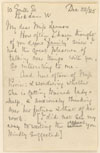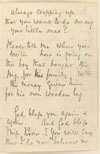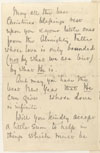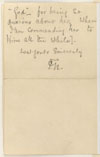



Notable Figures in British Nursing History
Below is a list of notable figures in British nursing history with a list of resources available to find out more information about their life and work.
Florence Nightingale 1820-1910
Florence Nightingale organised the nursing of wounded soldiers during the Crimean War and is hailed as the founder of modern nursing. She established the first professional training school for nurses at St. Thomas’ Hospital in London, which opened in 1860.
Notes on Nursing- What It Is, and What It Is Not, by Florence Nightingale
This groundbreaking book challenged the views on nursing at the time and provided an overview of the skills and proper practices nurses should adhere to:
The Nightingale Method
The main principles from Notes on Nursing condensed in to 10 points:
http://nursingtraditionhistory.helsekompetanse.no/module1/traditions/nightingale/method
Florence Nightingale Museum, Resources
Provides useful context to the life and times of Florence Nightingale:
https://www.florence-nightingale.co.uk/resources/
Florence Nightingale Museum, Exhibits from ‘Nursing and Midwifery
Provides snapshots in to the history and current issues surrounding nursing, featuring brief overviews of pioneering nurses, important events and more:
https://www.florence-nightingale.co.uk/200_nursing-midwifery/
Letters written by Florence Nightingale
A collection of letters from Florence Nightingale collected by the Royal Infirmary of Edinburgh's Lady Superintendent of Nurses, Angelique Lucille Pringle:
Mary Seacole 1805-1881
In 1855 Mary Seacole, a Jamaican born nurse, travelled to Crimea and established the ‘British Hotel’ which provided respite for injured and recovering soldiers.
Wonderful Adventures of Mrs. Seacole in Many Lands by Mary Seacole
Mary Seacole’s autobiography, which tells her story in her own words (audiobook):
‘What can Mary Seacole and Florence Nightingale teach us today’ told by Elizabeth Anionwu
This video provides useful insight in to the comparisons between Mary and Florence and the challenges they both faced:
https://www.youtube.com/watch?v=r9LVDwnRk2A
Mary Seacole: Creole Doctress, Nurse and Healer
An article written by the historian Helen Rappaport describing the life and times of Mary Seacole:
https://helenrappaport.com/footnotes/mary-seacole-creole-doctress-nurse/
Sophia Duleep Singh 1846- 1948
Daughter of the last Sikh Maharaja, Sir Duleep Singh and godchild to Queen Victoria, Sophia was born in England and became a VAD nurse during WW1. She was also a pioneering women’s rights activist and an outspoken suffragette.
VAD service card of Princess Sophia Duleep Singh
A short audio tour from the British Red Cross museum & archives:
https://museumandarchives.redcross.org.uk/objects/46888
Sophia Duleep Singh: princess and suffragette, by Anita Anand
This article outlines the life of Sophie Duleep Singh and discusses her accomplishments:
https://www.bl.uk/votes-for-women/articles/sophia-duleep-singh-princess-and-suffragette#
Eva Luckes 1854-1919
Eva Luckes, matron of London Hospital and close friend of Florence Nightingale was a campaigner against nurses’ registration. Both Florence Nightingale and Eva Luckes were opposed to registration believing that subjecting individuals to examinations would compromise the essence of nursing practice.
General Nursing by Eva Lucke (1898 version)
The volume is a collection of lectures that Eva Luckes gave to the probationer nurses during their training:
https://archive.org/details/b20387416
Ethel Gordon Fenwick 1857-1947
Scottish nurse and matron of St Bartholomew’s Hospital in London and campaigner for the registration of nurses which resulted in the Nurses Registration Act of 1919.
Biography from Nursing and Midwifery council
https://www.nmc.org.uk/always-caring-always-nursing/ethel-fenwicks-story/
An image of a certificate confirming the individual has become a state registered nurse dating 1925
State Registered Nurses (SRN) came into being in England and Wales after the introduction of the Nurses Registration Act of 1919. Ethel Gordon Fenwick appears as ‘Nurse No 1’ when the register opened in 1923:
https://wellcomecollection.org/works/rvf42xnt/items?langCode=false&canvas=1
Joseph Bell 1837-1911
Joseph Bell was a renowned Scottish surgeon and lecturer at the University of Edinburgh.
Notes on Surgery for Nurses by Joseph Bell 1895
This was one of the first nursing teaching manuals. Joseph Bell played a significant role in advocating training for nurses:
https://archive.org/details/b20418899?ref=ol&view=theater
William Rathbone (1819-1902), District Nursing and the Workhouse/Poorhouses
Philanthropist and businessman, William Rathbone was at the forefront for the inception of district nursing. After witnessing the care employed by his wife’s nurse, he was prompted to direct his efforts in to establishing a district nursing training school in his hometown of Liverpool in order to tackle illnesses caused by the widespread poverty of the time. He also played a significant part in the founding of the Queen’s Nursing Institutes.
Image of Liverpool Training School and Home for Nurses which was founded and built by William Rathbone in 1862 at his own expense and upon advice given to him by his close friend Florence Nightingale:
https://wellcomecollection.org/works/k4c32b8d/images?id=gtm7nwt2
Photograph of Florence Lees, (1840-1922) a pioneer of district nursing, includes brief biographical information:https://wellcomecollection.org/works/rrjarzvt/items?langCode=eng&canvas=1
A district nurse with her outdoor uniform and bag, 19th century:
https://wellcomecollection.org/works/cz6hmydy/images?id=xqzfv5x7
The Lancet Reports on Metropolitan Workhouse Infirmaries 1865-1866-Lambeth
This report gives an example of the perilous state of workhouse infirmaries in the 1860s with particular mention of the scarcity of paid and trained nurses. Reports such as these prompted the call for more trained nurses to attend to the sick and aged
http://www.workhouses.org.uk/Lancet/Lambeth.shtml
The Queen’s Nursing Institute Scotland, History:
This resource offers an understanding of how district nursing was founded and how the institution operated in Scotland:
https://www.qnis.org.uk/history/
Kate Marsden 1859-1931
A British nurse who journeyed to Siberia in 1890s to investigate an alleged cure for leprosy in the form of an herb. There she established a leper hospital and has a memorial statue erected in her honour in the village of Sosnovka. She helped set up St Francis Leprosy Guild in 1895. Her reputation was later damaged due to controversy surrounding her sexuality.
On Sledge and Horseback to Outcast Siberian Lepers by Kate Marsden 1892
This book outlines the journey undertaken by Marsden:
Lecture on “The Leper” 1893 Chicago World Fair
Marsden was invited to Chicago to give a lecture on her travels and had a booth in the women’s building: https://archive.org/details/congressofwomenh00congrich/page/212/mode/2up
Designed by the Learning Technology Section, © The University of Edinburgh

